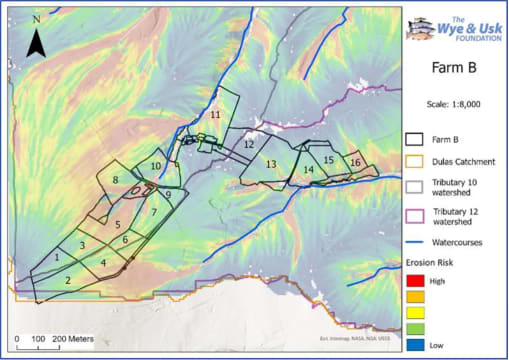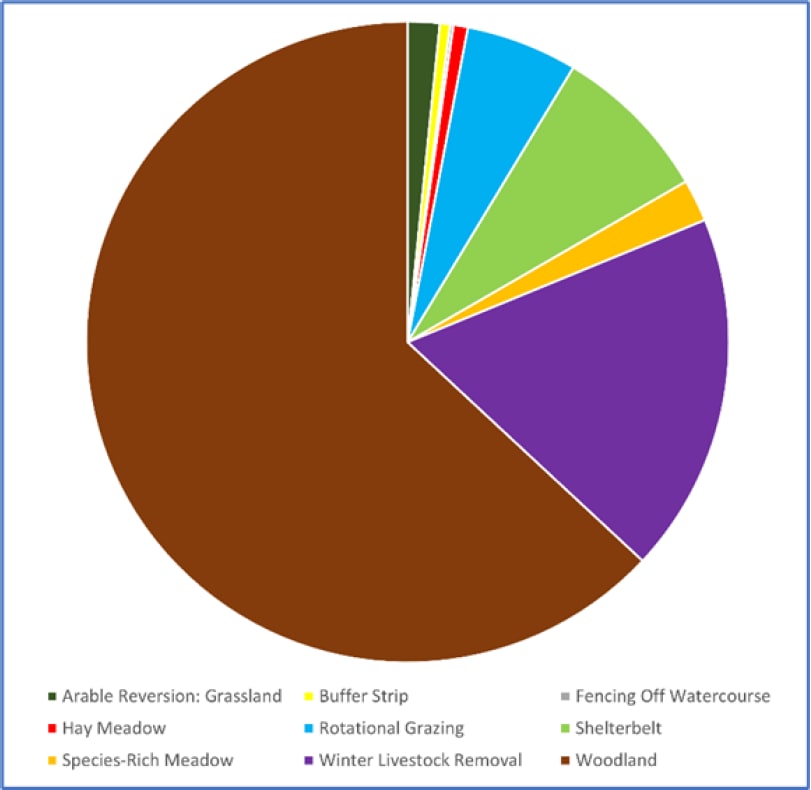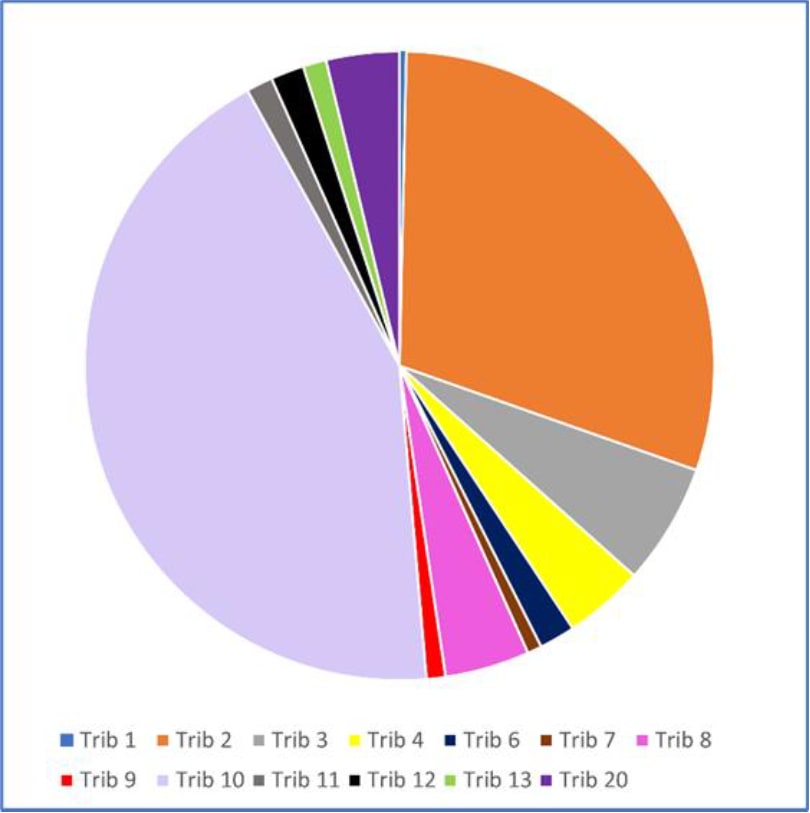The Delivering Innovative Markets for the Environment (DIME) Project is led by the Wye and Usk Foundation (WUF) in partnership with Nature Finance and the Rivers Trust. This pilot project is sourced by Triodos Bank and grant funded by Natural Environment Investment Readiness Fund (NEIRF), in partnership with Defra and Environment Agency. The project is developing novel NFM funding on 2 of the headwater streams of the river Monnow; the Dore and Dulas. The Dulas Brook runs through two communities which are at risk from flooding (Dulas and Ewyas Harold) and impacts a number of other areas further downstream. To date we have:
- Assessed flooding issues and quantified how the current land use practices in the Dulas catchment are contributing to them.
- Prioritised tributaries and their sub-catchments according to level of flow, position in catchment and opportunity to reduce flood risk
- Worked with land managers and farmers to identify appropriate changes and interventions to reduce overland flow
- Modelled the impact of baseline land use on flood risk and the impact of implementing interventions and the associated reduction in tributary flows
- Identified and engaged ‘buyers’ including Dwr Cymru, Developers, Network rail Herefordshire Council, the insurance industry and the Environment Agency
By April 2023, we will have:
- Facilitated the development an NFM ‘catchment market’
- Set up natural capital trading special purposes vehicle (SPV) using the portfolio of evidence and engagement
Approach
The Hydrological Engineering Center’s – River Analysis System (HEC-RAS) software was used to model rainfall events in the catchment. The aim was to prioritise sub-tributaries based on flood contribution to the Dulas Brook. Data was then inputted to simulate an extreme rainfall event. A total of 24 tributaries were assessed to evaluate the cumulative effect of rainfall on the catchment. The tributaries were grouped based on the peak flow estimated from the hydrological modelling (see graph).

The watersheds of each of the tributaries were mapped in ArcGIS Pro to determine the area, along with the farms located within them. Farms were then approached and, where engagement was successful, initial field-based review was undertaken. These assessed soil condition and type, current land use and any existing NFM measures. The SCIMAP adjacent highlights the risk of overland flow and high levels of connectivity with the watercourses and the allocated field numbers.

The surface water infiltration rates used in the model are based on HEC-RAS guidance and published literature and consider land use, soil group and soil condition. A desk-based review was then conducted to evaluate potential NFM opportunities.
The DIME Model
Based on the current land use, soil type and condition the MS Excel-based DIME NFM model quantifies the infiltration rate change (mm/hr) and the maximum surface runoff reduction (m3/hr) attributed to specific NFM interventions in specific locations. The extreme rainfall event was incorporated into the model to quantify current and predicted overland flow, and overall reduction in overland flow based on a specific intervention. The NFM interventions identified during onsite surveys and assessed in the model include: planting woodlands, shelterbelts and buffers; creating attenuation storage capacity; arable reversion; rotational grazing; winter livestock removal and reducing stocking numbers; and fencing off watercourses.

Results
The interventions identified provide an overland flow reduction of 12,580 m3/hr (with an additional 4,650 m3 of attenuation). The model estimates that woodland, and shelterbelt creation result in the highest surface runoff reduction at 10,585 m3/hr, followed by farm interventions at 1,995 m3/hr (see adjacent). As the DIME model is updated with in-field testing results and data from new studies, infiltration rates will be reviewed to more robustly estimate the impact of reduced sheep compaction / puddling, which are currently estimated conservatively. This will lead to a further modelled decrease in overland flow from farmland and reduced need for Shelter belts and woodland.
Tributary 10 makes the largest contribution to overland flow reduction (see adjacent), with 4,308 m3/hr, followed by Tributary 2 with 2,985 m3/hr. Both of these tributaries have large areas of woodland planned, further highlighting that woodland creation is contributing the greatest proportion of surface runoff reduction. A summary of overland flow reduction per tributary is shown adjacent. Key farms have been identified and engaged with via formal meetings and informal discussions. Farms are currently not named in the report and MOUs are currently being developed to formalise engagement.

